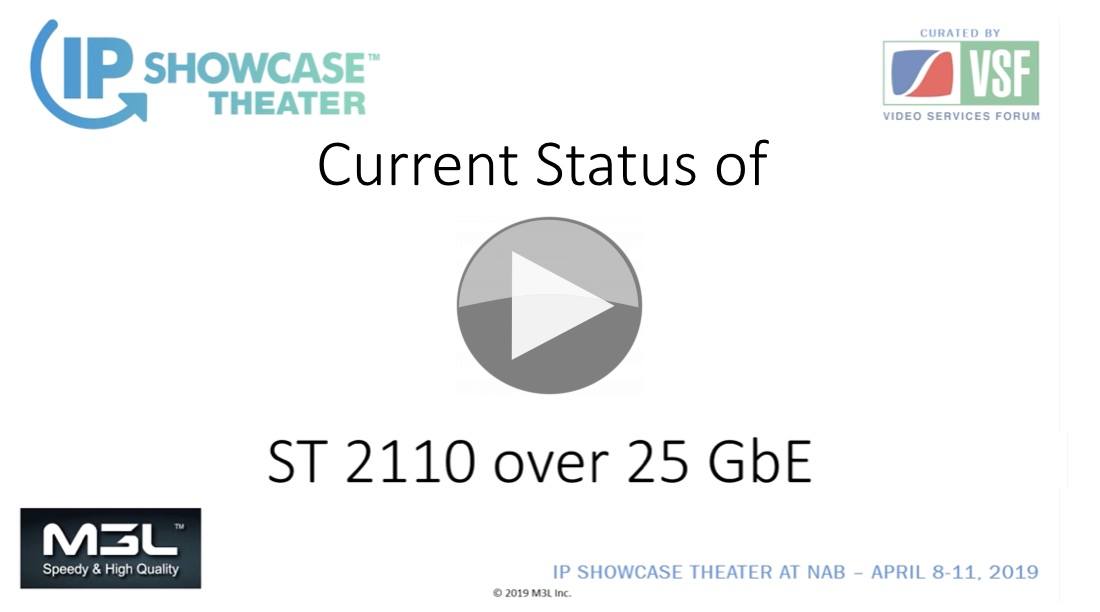IT still has catching up to do. The promise of video over IP and ST 2110 is to benefit from the IT industry’s scale and products, but when it comes to bandwidth, there are times when it isn’t there. This talk looks at 25 gigabit (25GbE) network interfaces to see how well they work and if they’ve arrived on the broadcast market.
Koji Oyama from M3L Inc. explains why the move from 10GbE to 25GbE makes sense; a move which allows more scalability with fewer cables. He then looks at the physical characteristics of the signals, both as 25GbE but also linked together into a 100GbE path.
We see that the connectors and adapters are highly similar and then look at a cost analysis. What’s actually available on the market now and what is the price difference? Koji also shows us that FPGAs are available with enough capacity to manage several ports per chip.
So if the cost seems to be achievable, perhaps the decision should come down to reliability. Fortunately, Koji has examined the bit error rates and shows the data which indicates that Reed Solomon protection is needed, called RS-FEC. Reed Solomon is a simple protection scheme which has been used in CDs, satellite transmissions and many other places where a light-weight algorithm for error recovery is needed. Koji goes into some detail here explaining RS-FEC for 25GbE.
Koji has also looked into timing both in synchronisation but also jitter and wander. He presents the results of monitoring these parameters in 10GbE and 25GbE scenarios.
Finishing up by highlighting the physical advantages of moving to 25GbE such as density and streams-per-port, Koji takes a moment to highlight many of the 25GbE products available at NAB as final proof that the 25GbE is increasingly available for use today.
Speaker
 |
Koji Oyama Director, M3L |


